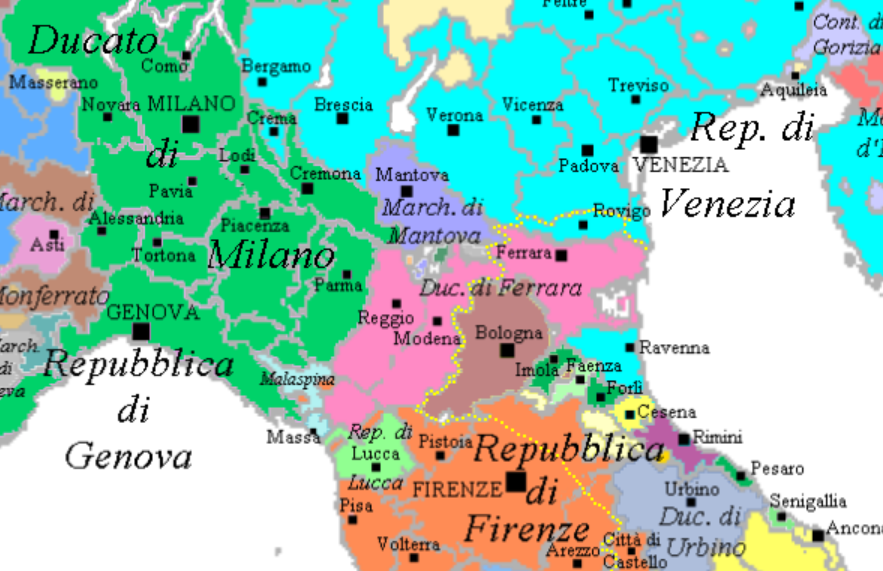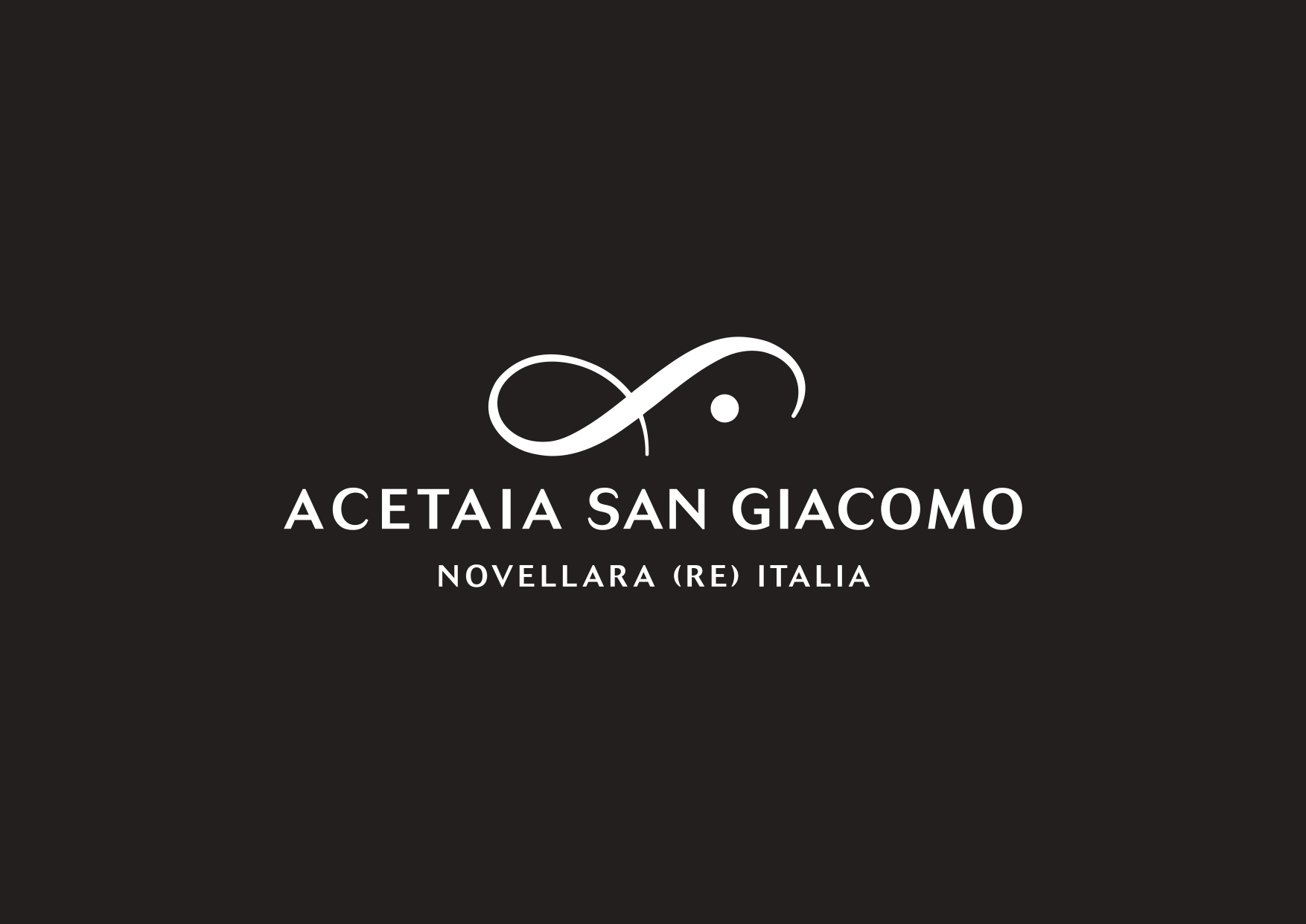
English version follows..
Il più complesso dei Balsamici senza Aceto dell'Acetaia San Giacomo,
solo da mosto di uve locali e biologiche, cotto lentamente a fuoco diretto,
parzialmente fermentato e acetificato in barili di rovere e invecchiato in barrique di ciliegio e caratelli in legno di ginepro
che conferiscono a questo prodotto intensi profumi "rinascimentali" di spezie e prugne cotte.
Dalla tiratura limitata, ecco perché è unica:
Acetaia San Giacomo's most complex Balsamic with no Vinegar added,
only from organic and local grape juice, slowly cooked over direct fire, partially fermented and acetified
in oak barrels and aged in cherry wood barriques and juniper wood casks that give to this product
intense Renaissance perfumes of spices and cooked prunes.
From a limited production, this is why it's unique:
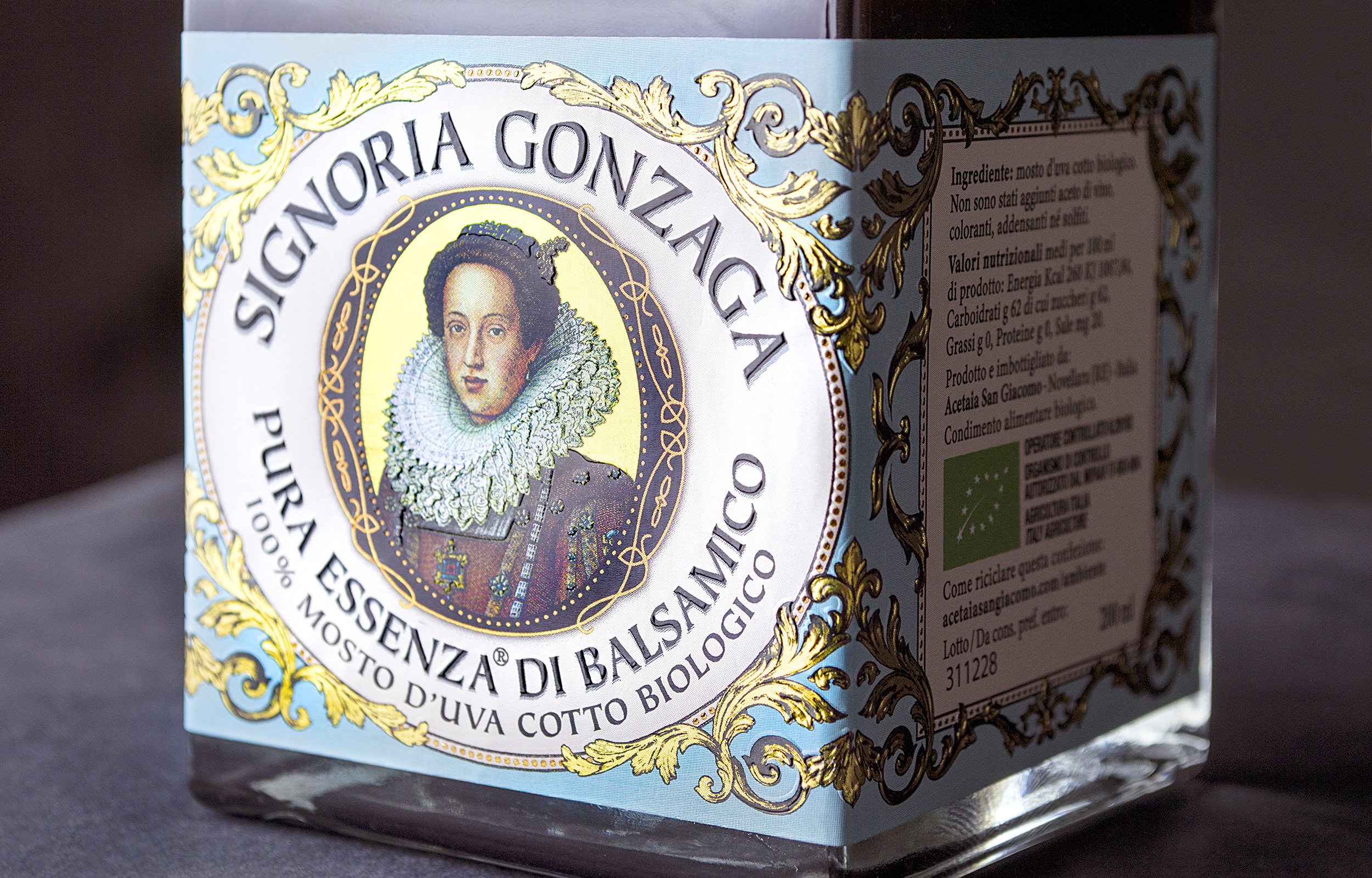
qualcosa che esprime ancor di più le qualità che distinguono l'Acetaia San Giacomo.
something that even more expresses the characteristics that distinguish Acetaia San Giacomo.
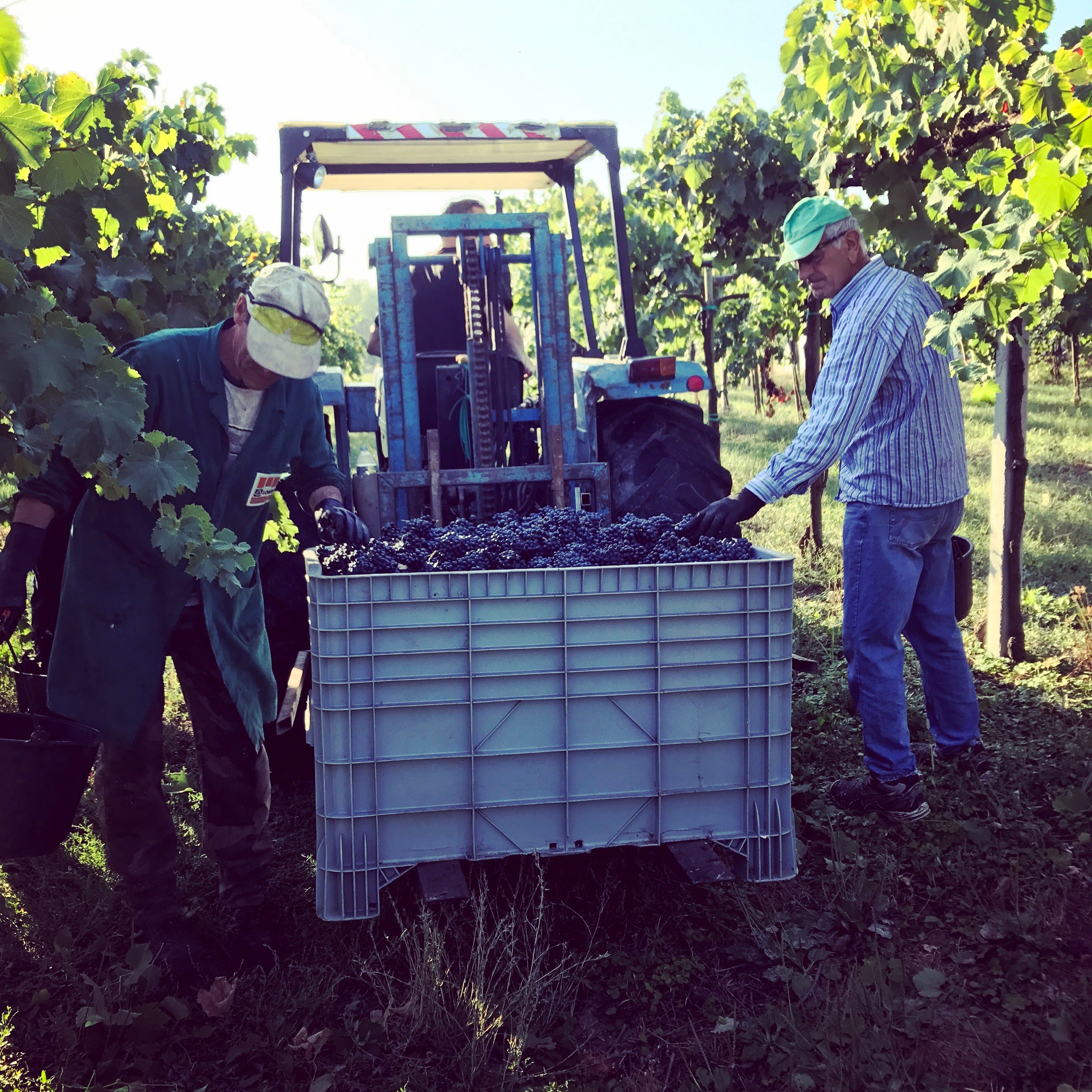
Dalla vendemmia manuale, svolta da mani esperte nei vigneti non lontani dall'Acetaia per raccogliere solo i grappoli migliori e perfettamente maturi nel periodo tra settembre e ottobre.
From the manual harvest, which is carried out in vineyards not far from the Acetaia by expert hands that select only the best and perfectly ripe bunches of grape in the period between September and October.
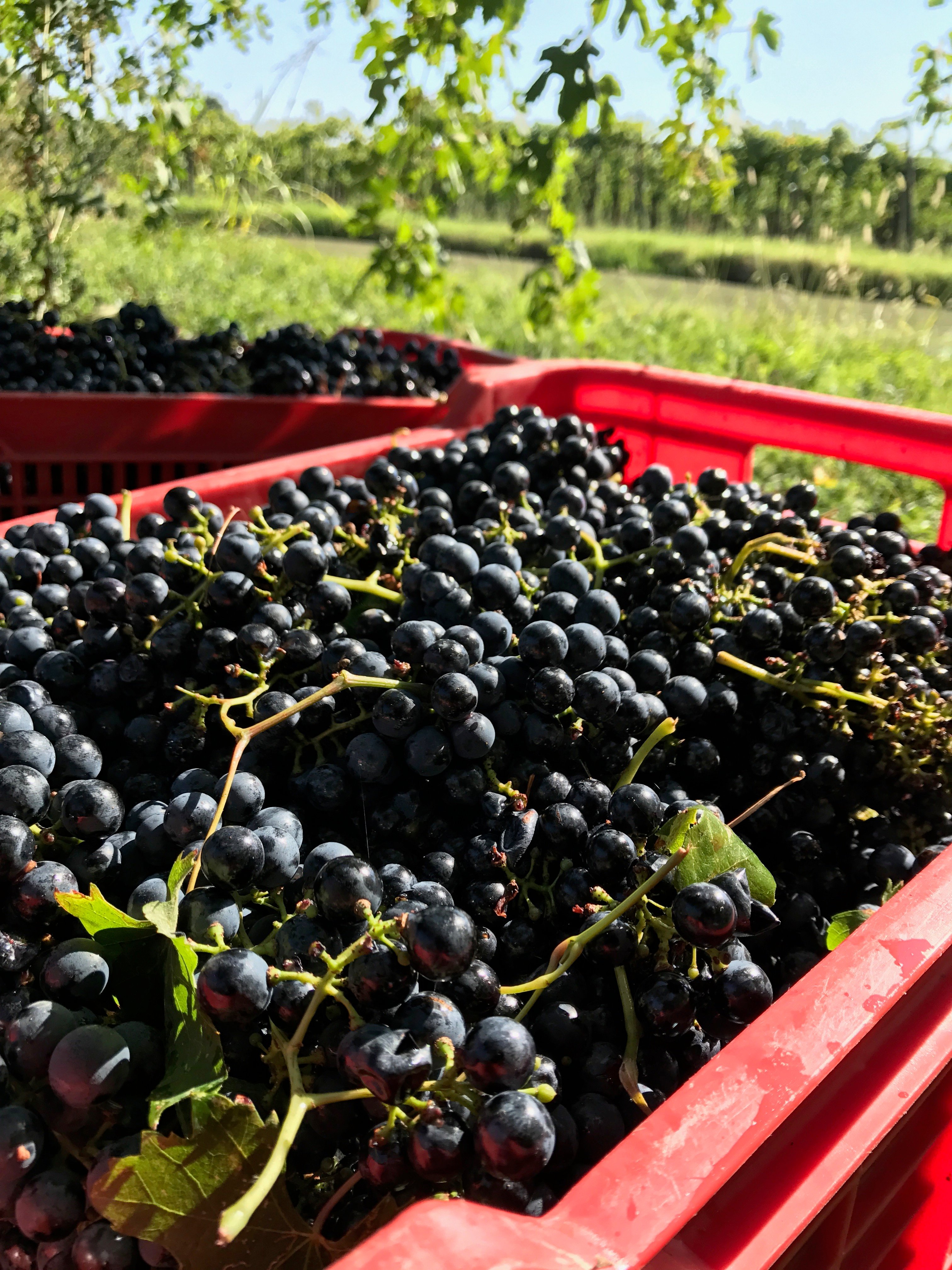
The organic grapes are the typical ones of the North-East area of the Reggio Emilia's province like the Lambrusco family (the Salamino here on the left, the Lambrusco Marani, Maestri, Sorbara etc...), the colored Ancellotta, the vigorous Trebbiano modenese and the scented Malvasia.
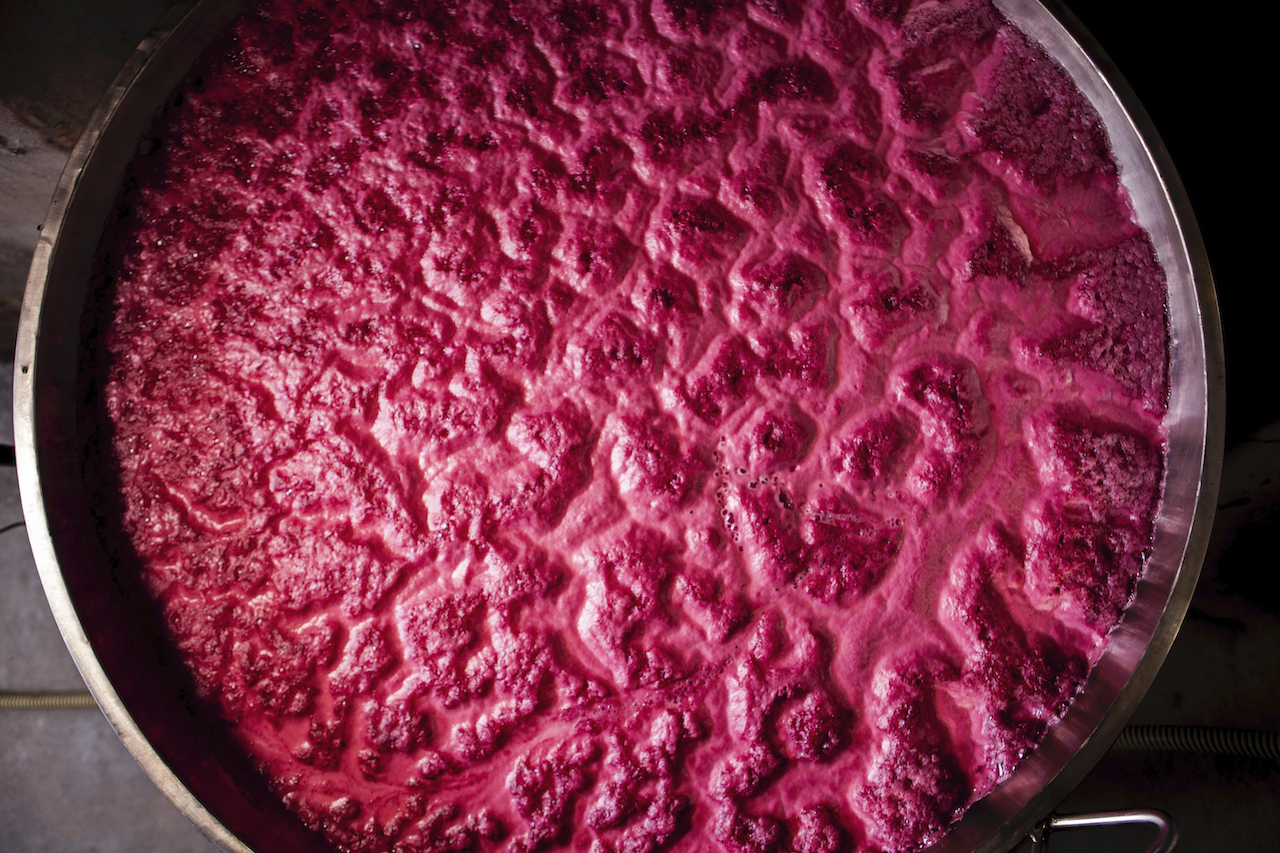
dello zucchero cotto e del miele.
Fino ad un massimo del 30% di acqua evapora durante questa fase: una concentrazione eccessiva non permetterebbe ai microrganismi di fermentare il mosto cotto correttamente.
Up to 30% of water evaporates during this phase: too high a concentration would not allow the microrganisms to ferment the cooked must correctly.

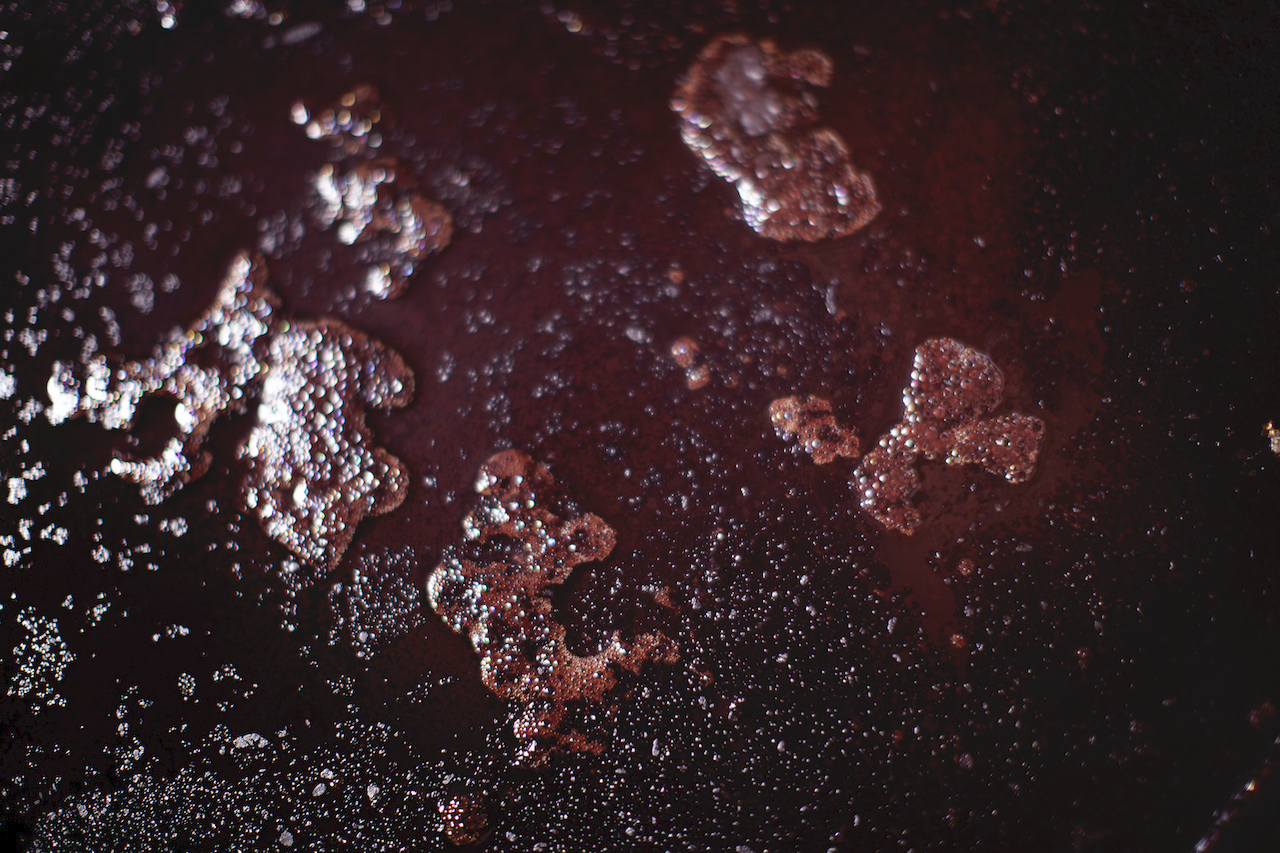
Le Fermentazioni: il cuore del prodotto e del processo:
Il mosto cotto è quindi pronto per essere trasferito nelle botti, generalmente barrique e tonneaux di rovere: mescolando il mosto cotto con una piccola parte rimanente dalla precedente produzione, ricca di acetobatteri e lieviti vitali, la natura prende piede. Grazie a questi microrganismi gli zuccheri del mosto cotto cominciano ad essere consumati per produrre anidride carbonica, calore, alcol e una miriade di molecole aromatiche che ricordano la frutta matura. Questo processo è molto delicato, totalmente naturale (non aggiungiamo starter selezionati) e richiede tempo e molte accortezze per evitare che il prodotto vada a male.
Trascorso il tempo necessario a trasformare parzialmente gli zuccheri contenuti, la seconda fermentazione, o più precisamente l'ossidazione acetica, prende spontaneamente piede grazie alla temperatura attorno ai 25 gradi e alla presenza di ossigeno nelle botti, mantenute scolme e coperte da una sottile pezza bianca. Gli acetobatteri infatti sono microrganismi aerobi, che necessitano quindi di ossigeno per vivere. Essi prolifereranno, nutrendosi dell'alcol prodotto precedentemente dai lieviti spontanei e trasformandolo in acido acetico insieme ad una moltitudine di altre molecole aromatiche, formando il caratteristico "velo" in superficie (visibile nelle immagini) che attesta la vitalità dei batteri e la naturalezza del prodotto.
I veli somigliano alla polvere di cacao per i Balsamici, ma la consistenza è più viscosa.
Questa fase di acetificazione porta ad una acidità del 4.5-5% in almeno un paio d'anni e avviene nell'antica stalla della Corte Faragosa, nome attribuito alla corte agricola dove oggi risiede l'Acetaia San Giacomo.
The Fermentations: the heart of the product and the process
The cooked must is then ready to be shifted into the barrels, usually oak barriques and tonneaux: mixing with a small part of liquid from the previous production, rich in acetobacteria and yeasts, nature takes its course. Thanks to these microrganisms the cooked must's sugar will start to be consumed by them to produce carbon dioxyde, heat, alcohol and a lot of aromathic molecules that remind ripe fruit. This is a very delicate phase, totally natural (we don't add selected starters) and it requires time and a lot of actions to avoid the spoilage of the product.
Once the sugars are partially transformed, the second fermentation, or more precisely the acetic oxydation, take place spontaneously thanks to the temperature around 25 C (77 F) and to the presence of oxygen in the casks, which are kept middle empty and just covered by white napkins. Indeed the acetobacteria are aerobic microrganisms, they need oxygen to live. They will thrive, eating the alcohol previously produced by the spontaneus levure and they will transform it into acetic acid with a moltitude of other aromathic molecules, creating the characteristic "veil" on the surface (visible in the pics) which attests the bacteria's vitality and the product's naturalness.
The veil resemble to cocoa powder for the Balsamico, but the consistency is more viscous.
This phase of acetification leads to an acidity of 4.5-5% in a couple of years at least and it occurs into the ancient stall of the Corte Faragosa, the name given to the farm in which nowadays resides the Acetaia San Giacomo.
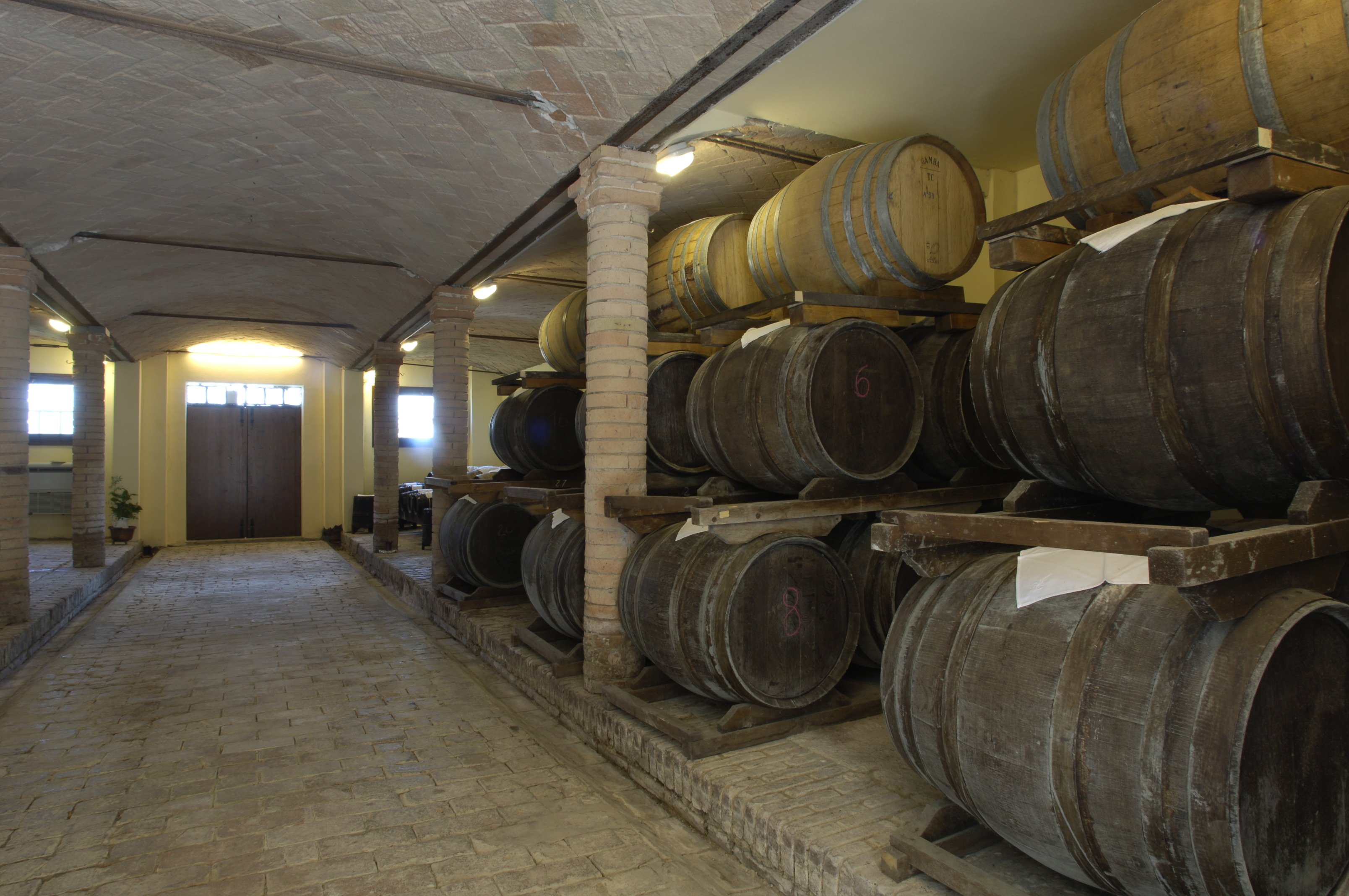
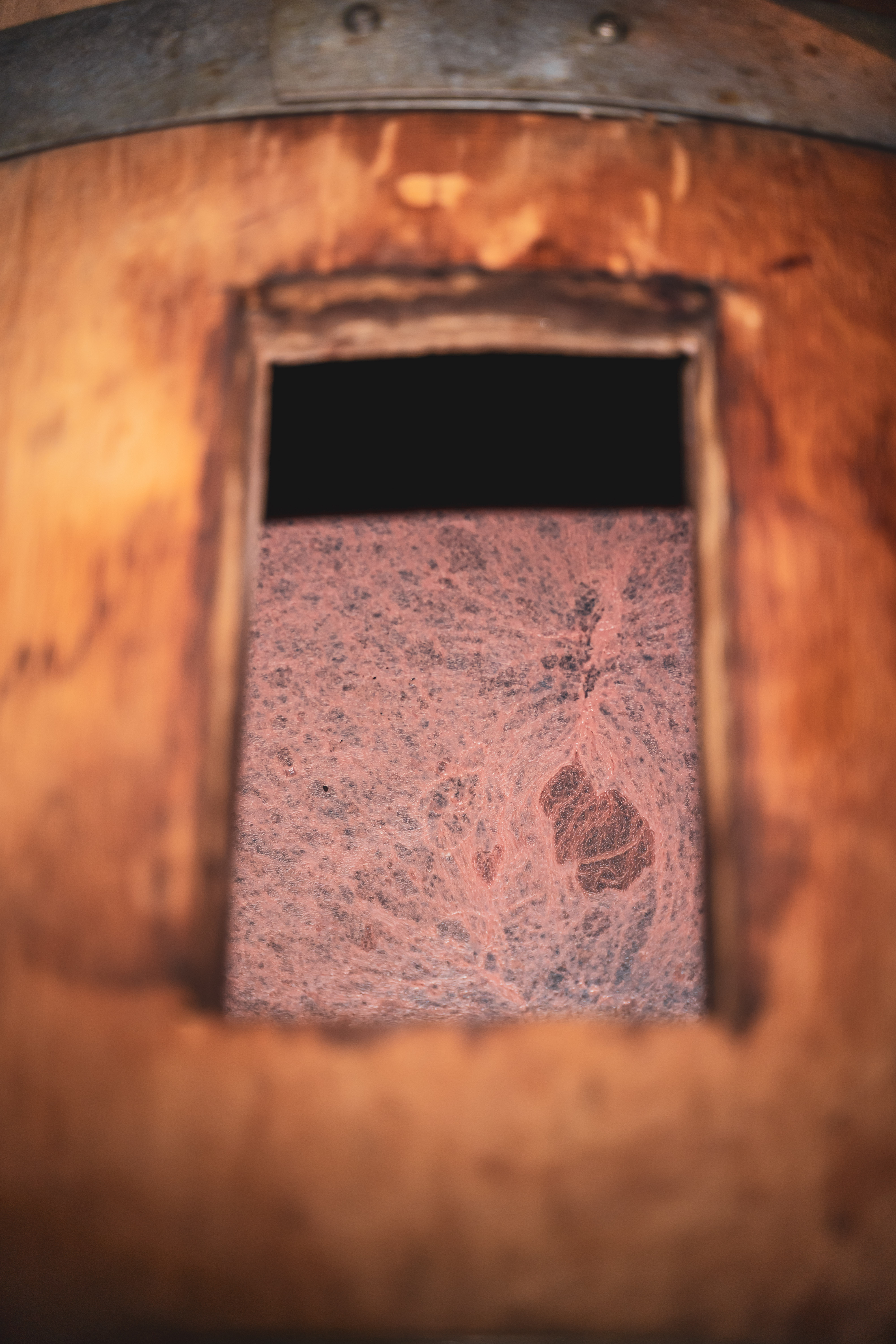
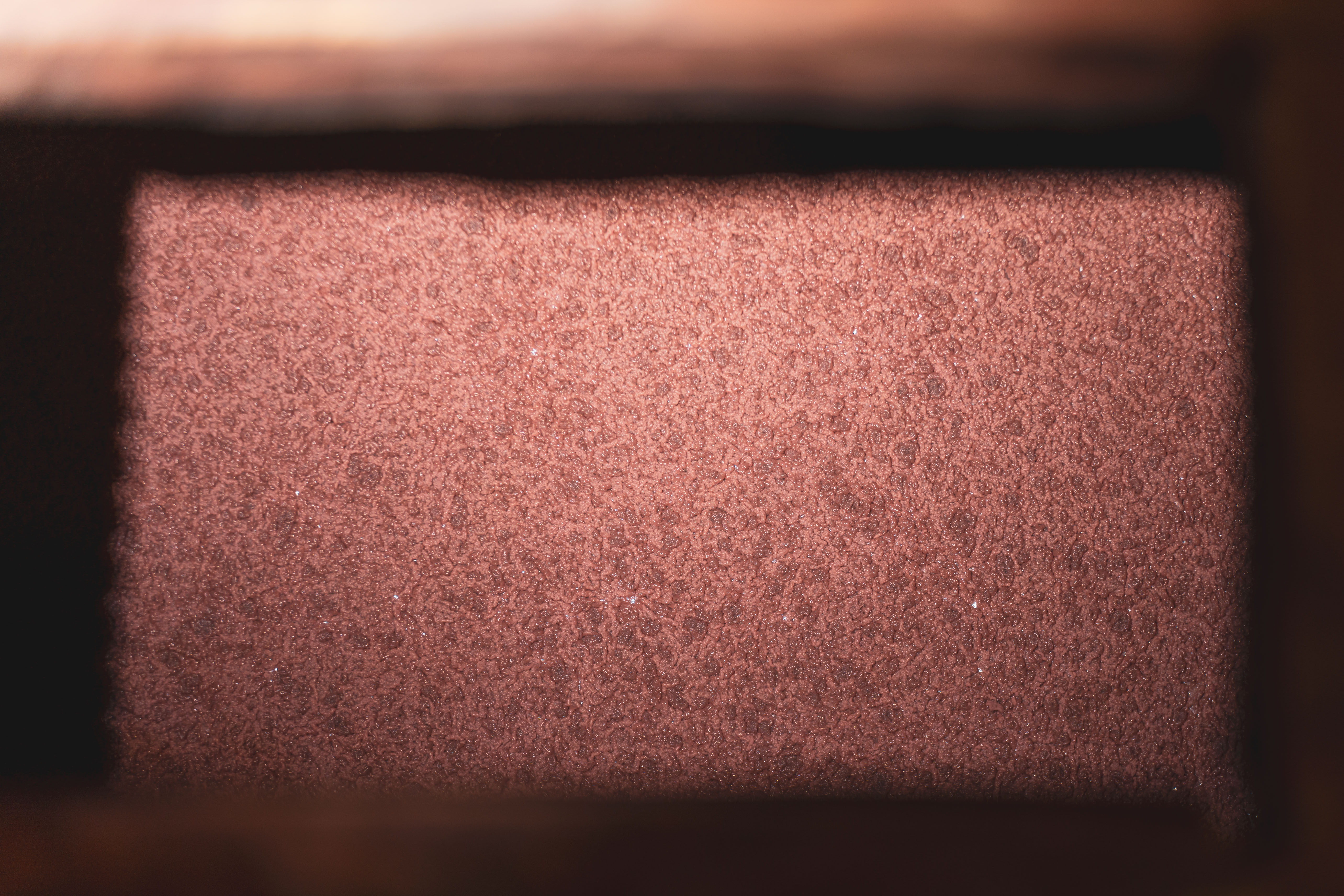
stabile e pronto per essere invecchiato.
Durante questa fase la Signoria Gonzaga assume le sue caratteristiche peculiari, in quanto il mosto cotto acetificato matura in botti di legni e dimensioni diverse: barrique di rovere mantenute colme con il metodo perpetuo, barrique di ciliegio e caratelli da 40 litri di legno di ginepro.
After this phase the Signoria Gonzaga assumes its peculiar characteristics, since the cooked must matures in casks with different sizes and wood: Oak barriques filled with the perpetual method, cherry wood barriques and juniper wood casks (40 lt of capacity).
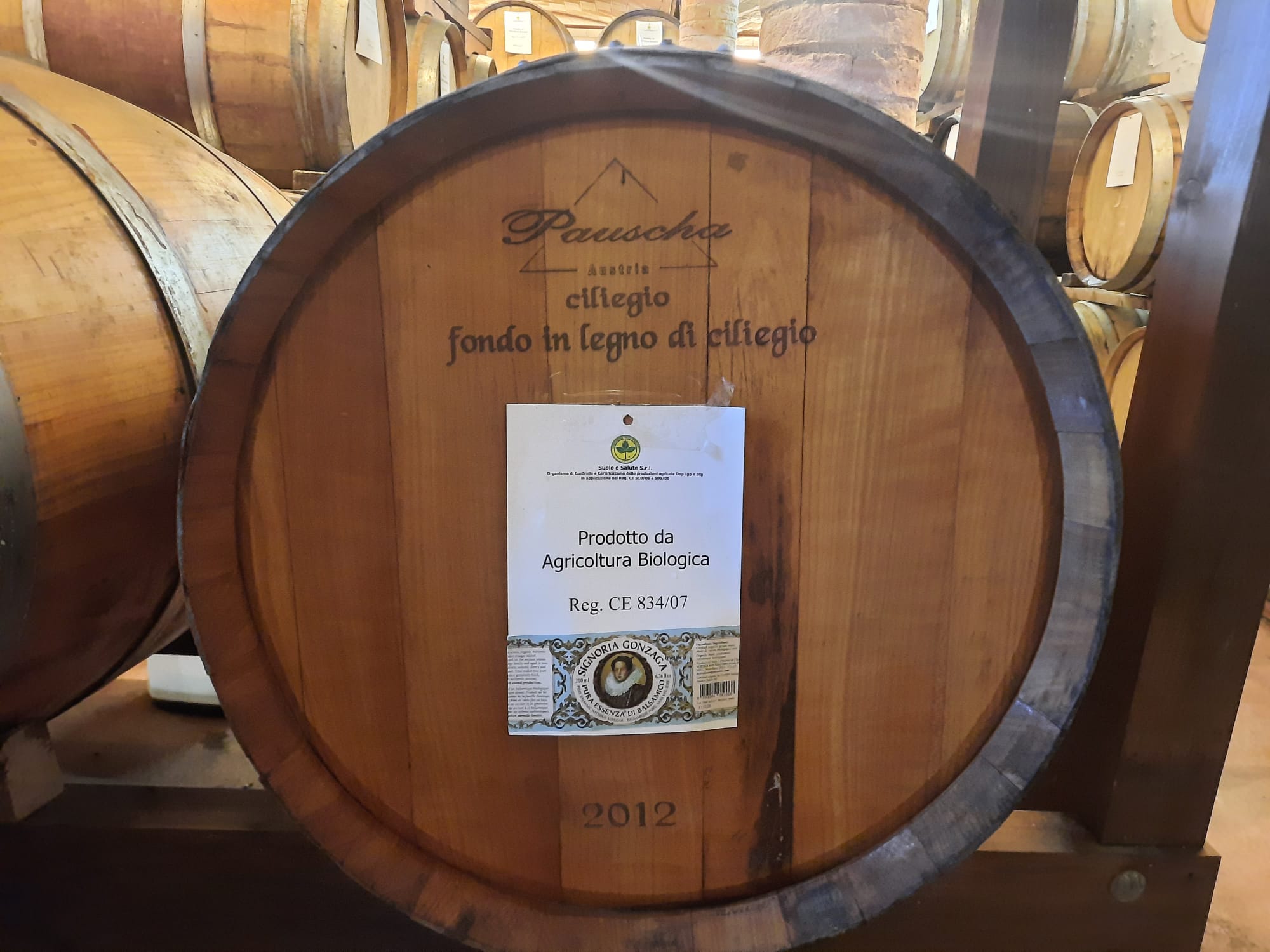
If the oak wood is not very aromathic but is good to give roundness and body to the product, the cherry wood enriches the aromathic component with vanilla and black cherry hints, while the juniper wood, very rich in essential oils, donates to the Signoria Gonzaga its "Renaissance" note and particularly balsamic of resin, oriental spices (tamarind), underwood.
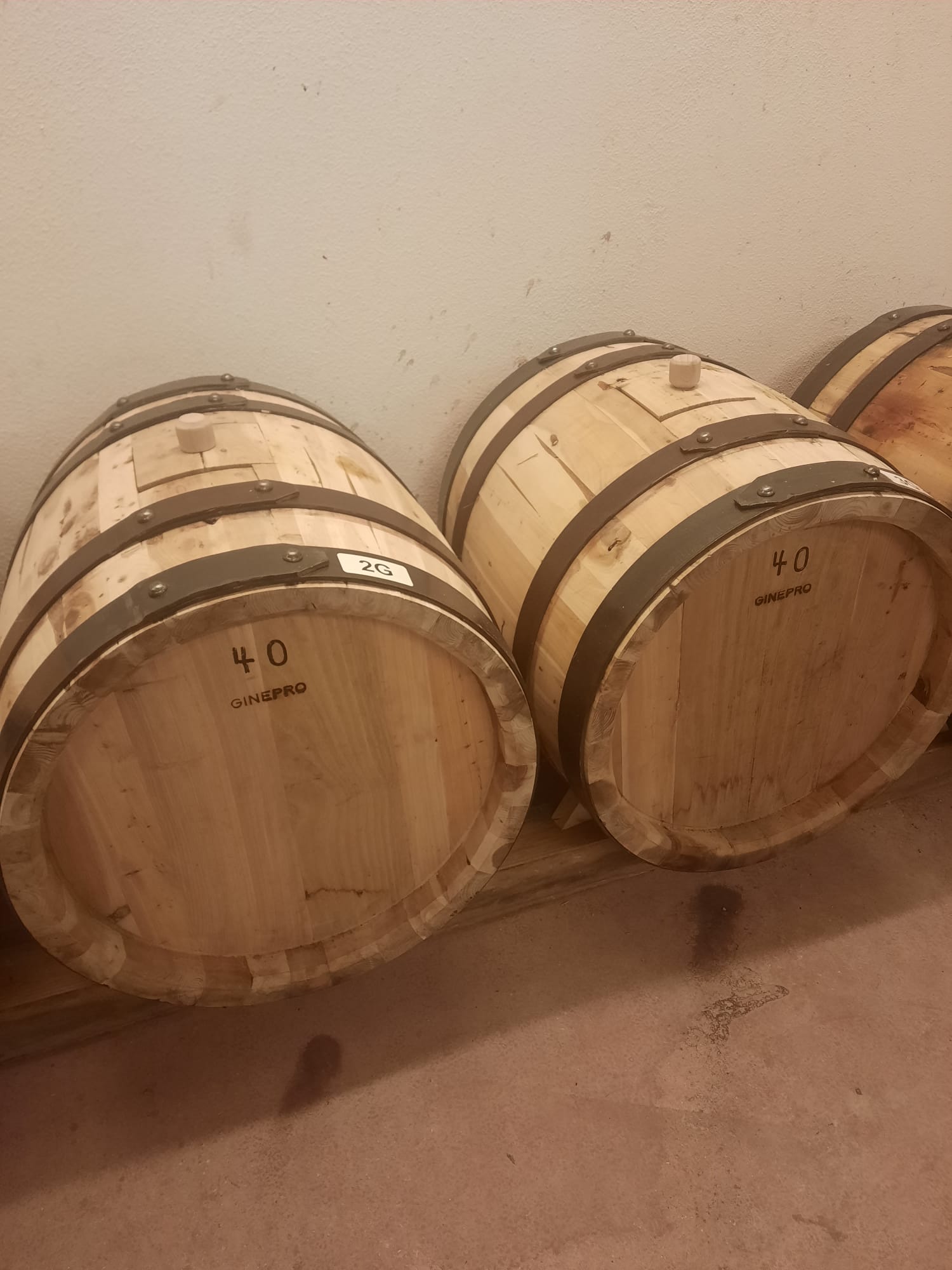
The patience, the environment, the microrganisms, the wood all together will build the complexity and wealth of the Signoria Gonzaga that will be further enhanced in the cubic ampoule you have in your hands, the gorgeous label, the hand binding with the wax seal and the personal shopper.
Balsamico senza Aceto e Aceto senz'acqua.
Acetaia San Giacomo: for first and forever,
Balsamic without Vinegar and Vinegar without water
Prova i Nostri Prodotti/Discover our Products
P.S.
Ma perché Signoria Gonzaga?
Il ritratto sull'ampollina rappresenta Eleonora Gonzaga. Ma chi fu questa importante duchessa?
Nata a Mantova nel 1598 nella famosa corte dei Gonzaga, era figlia di genitori potenti: la madre, Eleonora de' Medici (dal Granducato di Toscana, le cui radici si intersecavano profondamente con il Regno di Francia) e il padre, Vincenzo I di Gonzaga, duca di Mantova e del Monferrato.
Dopo il matrimonio con l'imperatore Ferdinando II nel 1621, si trasferì a Vienna dove venne incoronata Imperatrice del Sacro Romano Impero e di Ungheria.
Come si intreccia la sua storia con quella dell'Acetaia San Giacomo?
La sede dell'acetaia risiede in un'antica corte agricola risalente al XV sec, la Corte Faragosa. La sua proprietà era appunto dei Gonzaga, i signori che governavano quella zona. Venne poi data in fitto ad un conte ligure, Fregosa appunto, da cui il nome.
Tornando ai tempi moderni con lo sviluppo dell'Acetaia nacque una collaborazione tra noi e il comune di Novellara, dove risiede la corte, per la tutela e la diffusione di informazioni legate al potente principato dei Gonzaga: da qui il tributo in onore di Eleonora Gonzaga l'Imperatrice, cercando di riflettere la sua importanza e sollennità nel prodotto Signoria Gonzaga.
Infine, secondo alcuni autori (cfr. Prof. Stefano Magagnoli - "Il mito della memoria") non è da escludere che i Gonzaga siano state una di quelle famiglie nobili che hanno preso parte al processo di formazione del Balsamico come lo conosciamo oggi. In fin dei conti, sia i Canossa (dai quali apprendiamo dell'esistenza di aceti preziosi, talmente pregiati da essere conosciuti oltralpe, mille anni fa), ancora prima Virgilio (nel 30 a.c.) noto per essere stato uno dei primi a raccontare della tradizione padana di cuocere il mosto d'uva, hanno legato la loro vita al Mantovano e al basso reggiano. In quest'ottica, e con il consueto approccio un po' provocatorio che ci contraddistingue, vogliamo staccarci dal solito storytelling sui Balsamici Modenesi e di casa Estense e far conoscere la tradizione della bassa reggiana ancora così legata alla Signoria Gonzaga che ha regnato da queste parti per quasi 500 anni.
P.S.
Why Signoria Gonzaga?
The portrait on the bottle represents Eleonora Gonzaga. But who was this important duchess?
Born in Mantua in 1598 in the famous Gonzaga court, she was the daughter of powerful parents: her mother, Eleonora de 'Medici (from the Grand Duchy of Tuscany, whose roots intersected deeply with the Kingdom of France) and her father, Vincenzo I di Gonzaga , Duke of Mantua and Monferrato.
fter her marriage to Emperor Ferdinand II in 1621, she moved to Vienna where she was crowned Empress of the Holy Roman Empire and of Hungary.
How is its history intertwined with that of Acetaia San Giacomo?
The seat of today's Acetaia has been an ancient agricultural court dating back to the 15th century, the Corte Faragosa. Its property belonged to the Gonzaga, the lords who ruled that area. It was then rented to a Ligurian count, Fregosa in fact, hence the name.
Returning to modern times with the development of the Acetaia, a collaboration was born between us and the municipality of Novellara, where the court resides, for the protection and dissemination of information related to the powerful Gonzaga principality: hence the tribute in honor of Eleonora Gonzaga the Empress, trying to reflect her importance and solemnity in the Signoria Gonzaga product.
Finally, according to some authors (cf. Prof. Stefano Magagnoli - "Il mito della memoria") is not to be excluded that the Gonzaga lordship was one of the noble families that took part in the process of forming the Balsamic Vinegar as we know today. After all, both the Canossa family (from which we know about the existance of precious vinegars, so esteemed that they were known beyond the Alps a thousand years ago) and even before Virgilio (30 b.C.) was known to be one of the first to tell about the Po Valley tradition of cooking the grape juice, they linked their life to the Mantua and lower Reggio area. With this in mind, and with the usual provocative approach that distinguishes us, we want to break away from the usual storytelling on the Modena and Estense Balsamic origin and make known the tradition of the lower Reggio area so tied to the Gonzaga family that reigned in these parts for nearly 500 years.
Il territorio color lavanda rappresenta il territorio della casata dei Gonzaga nel XV sec /
t
he lavender-colored territory represents the territory of the Gonzaga family in the 15th century
